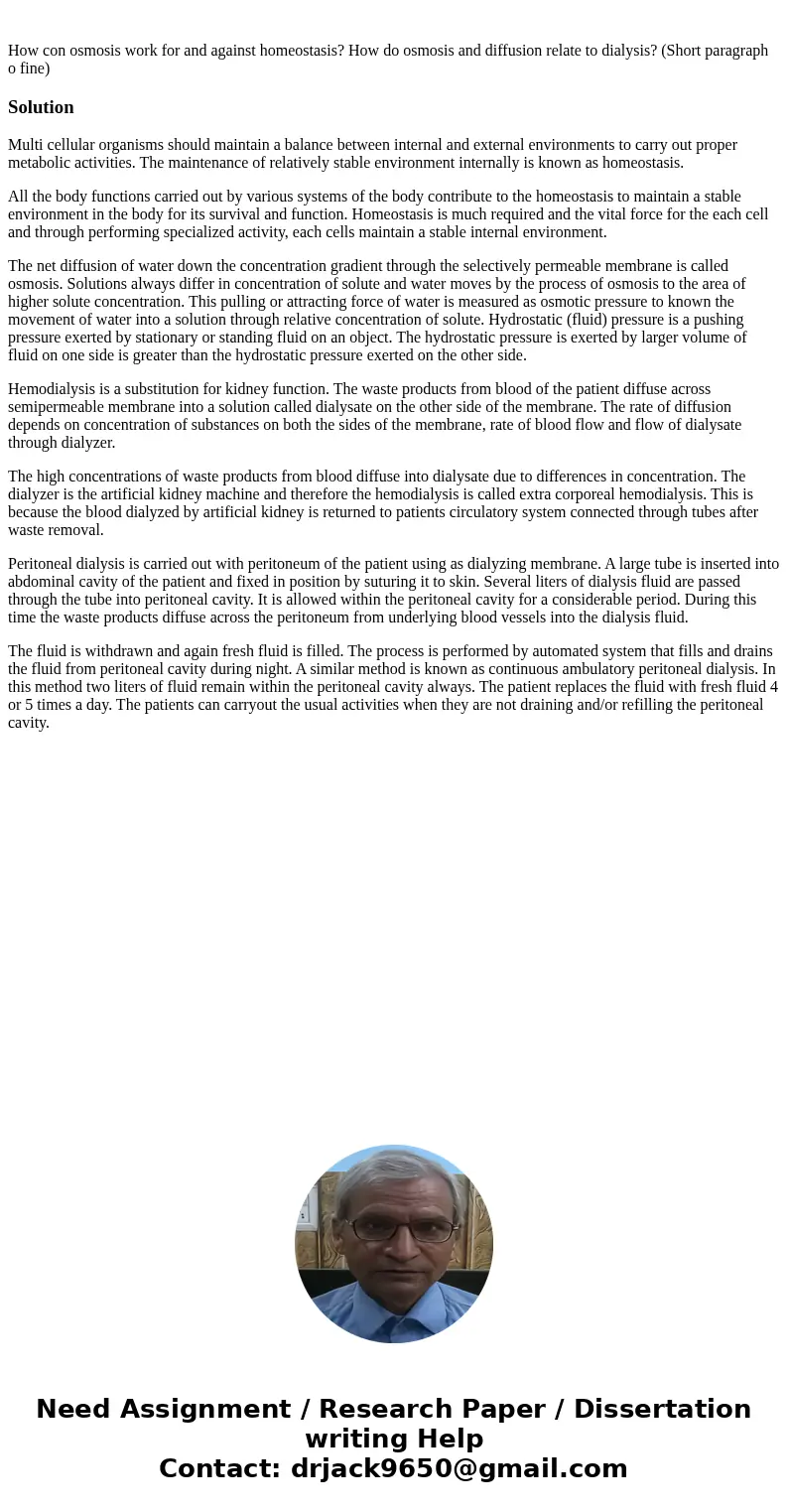How con osmosis work for and against homeostasis How do osmo
Solution
Multi cellular organisms should maintain a balance between internal and external environments to carry out proper metabolic activities. The maintenance of relatively stable environment internally is known as homeostasis.
All the body functions carried out by various systems of the body contribute to the homeostasis to maintain a stable environment in the body for its survival and function. Homeostasis is much required and the vital force for the each cell and through performing specialized activity, each cells maintain a stable internal environment.
The net diffusion of water down the concentration gradient through the selectively permeable membrane is called osmosis. Solutions always differ in concentration of solute and water moves by the process of osmosis to the area of higher solute concentration. This pulling or attracting force of water is measured as osmotic pressure to known the movement of water into a solution through relative concentration of solute. Hydrostatic (fluid) pressure is a pushing pressure exerted by stationary or standing fluid on an object. The hydrostatic pressure is exerted by larger volume of fluid on one side is greater than the hydrostatic pressure exerted on the other side.
Hemodialysis is a substitution for kidney function. The waste products from blood of the patient diffuse across semipermeable membrane into a solution called dialysate on the other side of the membrane. The rate of diffusion depends on concentration of substances on both the sides of the membrane, rate of blood flow and flow of dialysate through dialyzer.
The high concentrations of waste products from blood diffuse into dialysate due to differences in concentration. The dialyzer is the artificial kidney machine and therefore the hemodialysis is called extra corporeal hemodialysis. This is because the blood dialyzed by artificial kidney is returned to patients circulatory system connected through tubes after waste removal.
Peritoneal dialysis is carried out with peritoneum of the patient using as dialyzing membrane. A large tube is inserted into abdominal cavity of the patient and fixed in position by suturing it to skin. Several liters of dialysis fluid are passed through the tube into peritoneal cavity. It is allowed within the peritoneal cavity for a considerable period. During this time the waste products diffuse across the peritoneum from underlying blood vessels into the dialysis fluid.
The fluid is withdrawn and again fresh fluid is filled. The process is performed by automated system that fills and drains the fluid from peritoneal cavity during night. A similar method is known as continuous ambulatory peritoneal dialysis. In this method two liters of fluid remain within the peritoneal cavity always. The patient replaces the fluid with fresh fluid 4 or 5 times a day. The patients can carryout the usual activities when they are not draining and/or refilling the peritoneal cavity.

 Homework Sourse
Homework Sourse